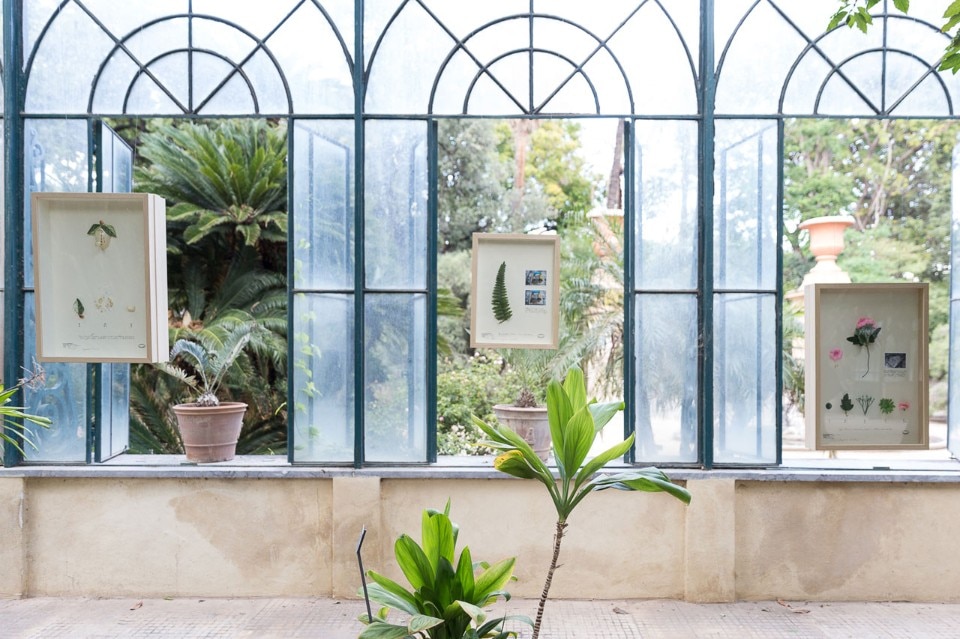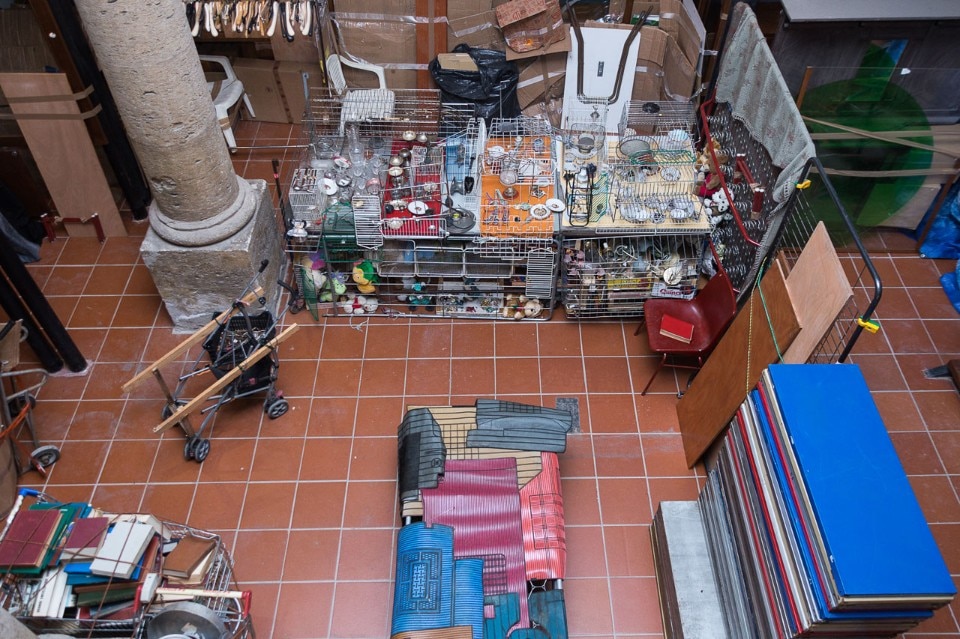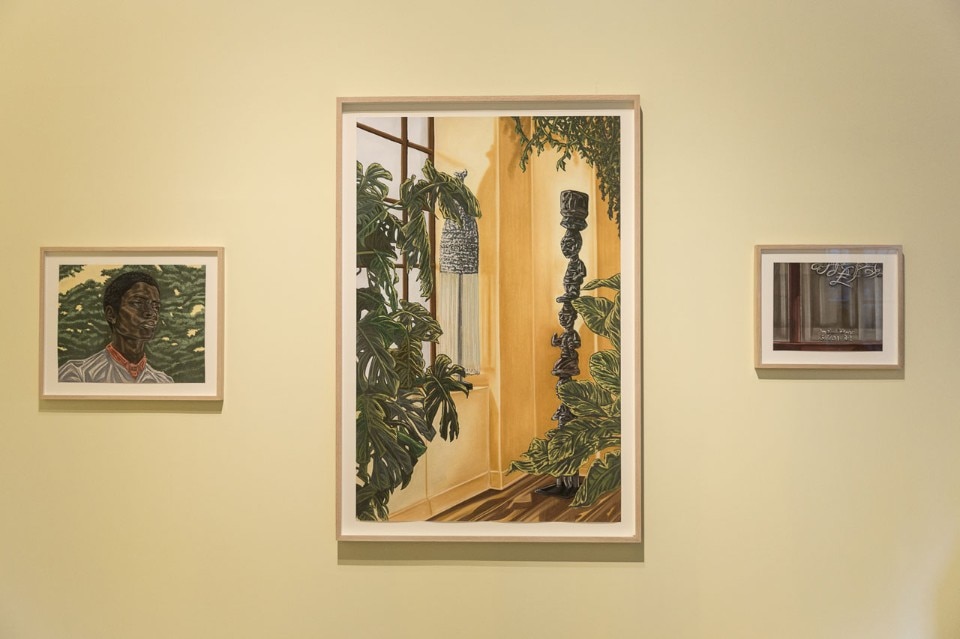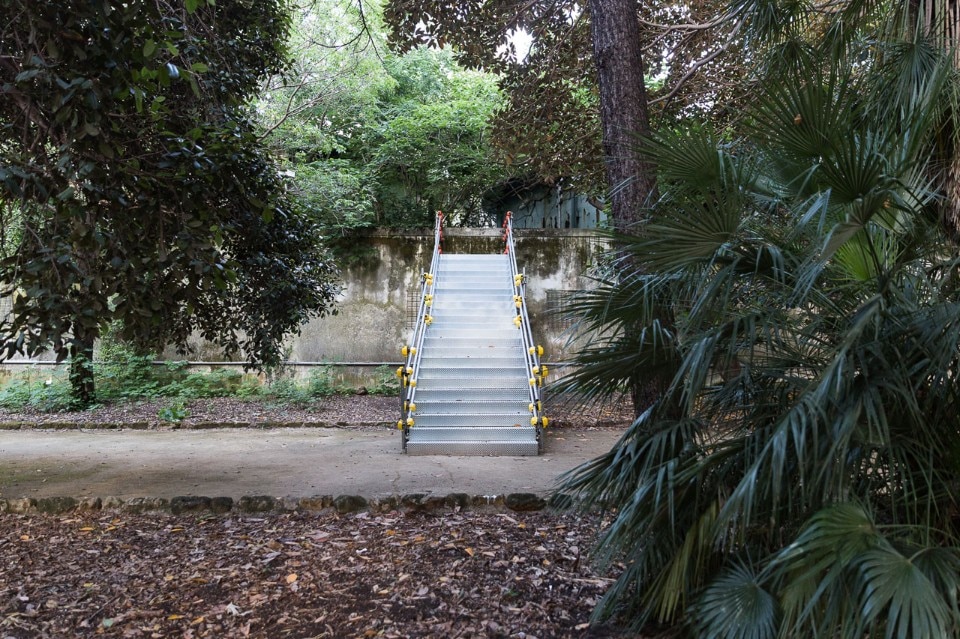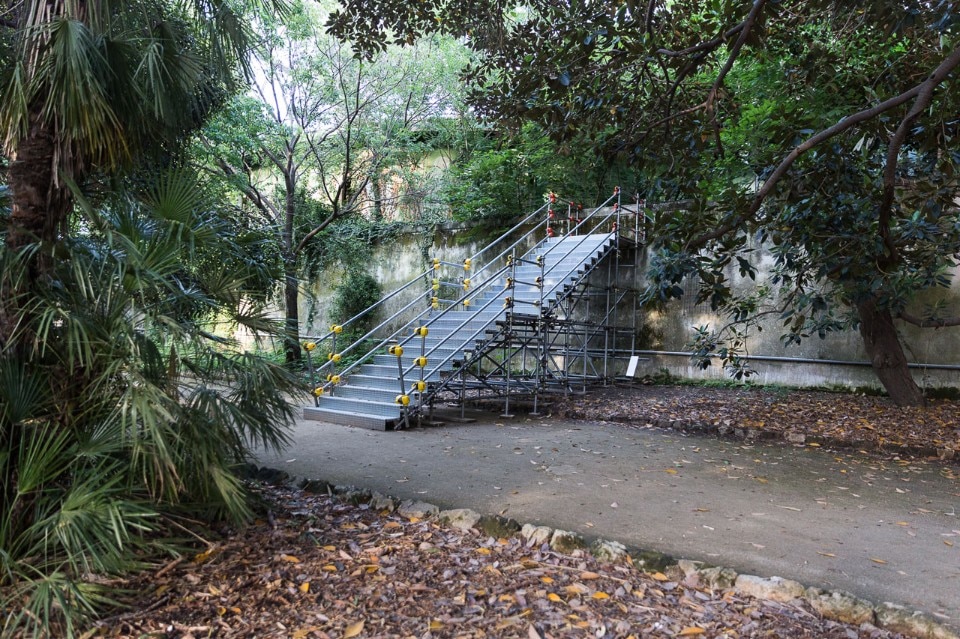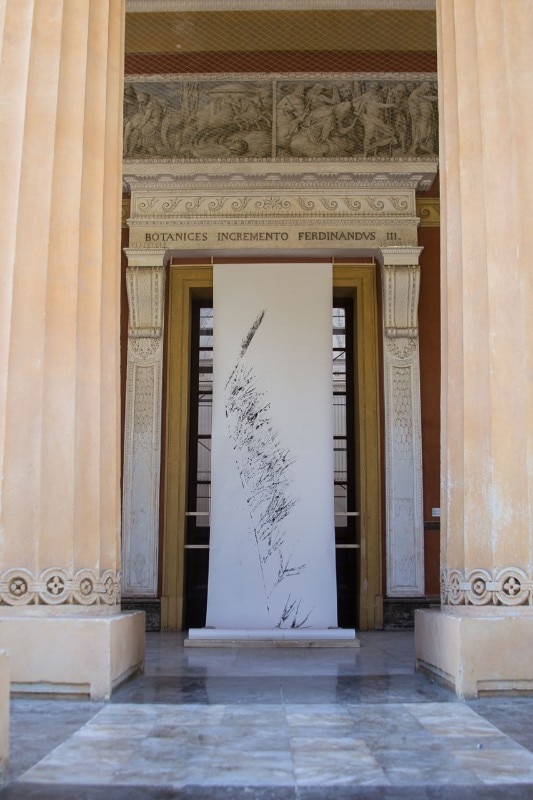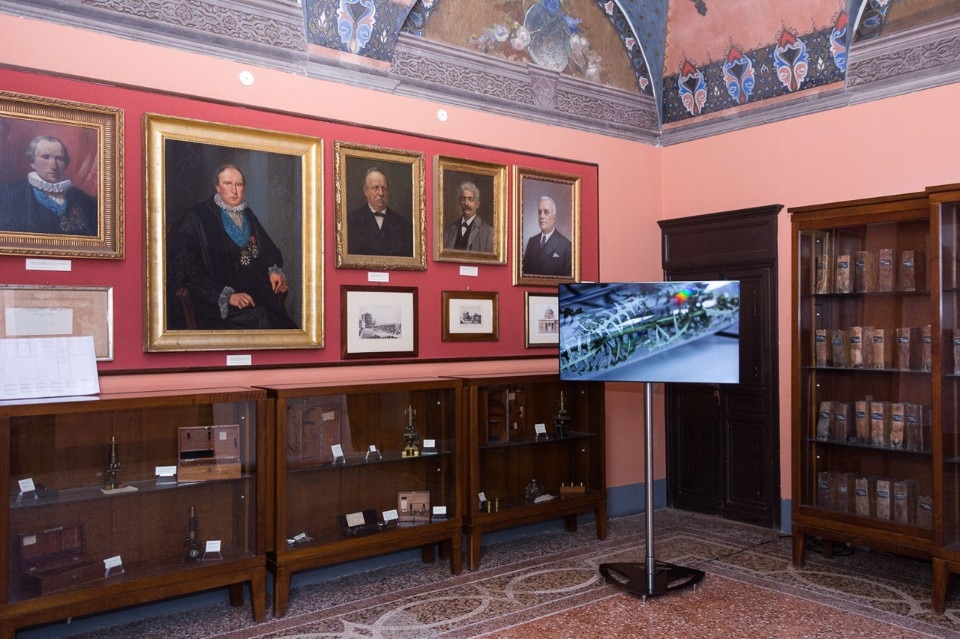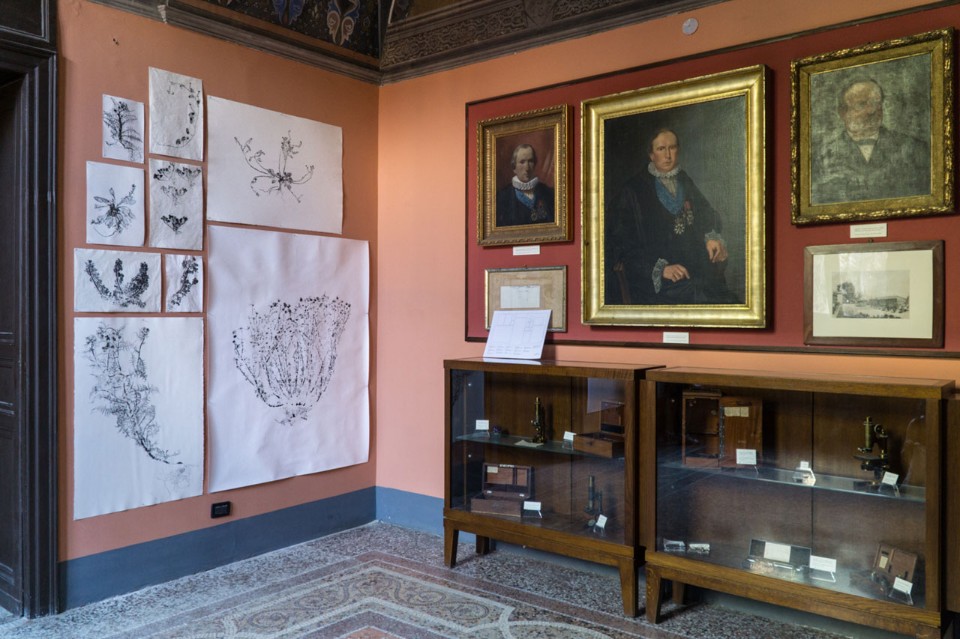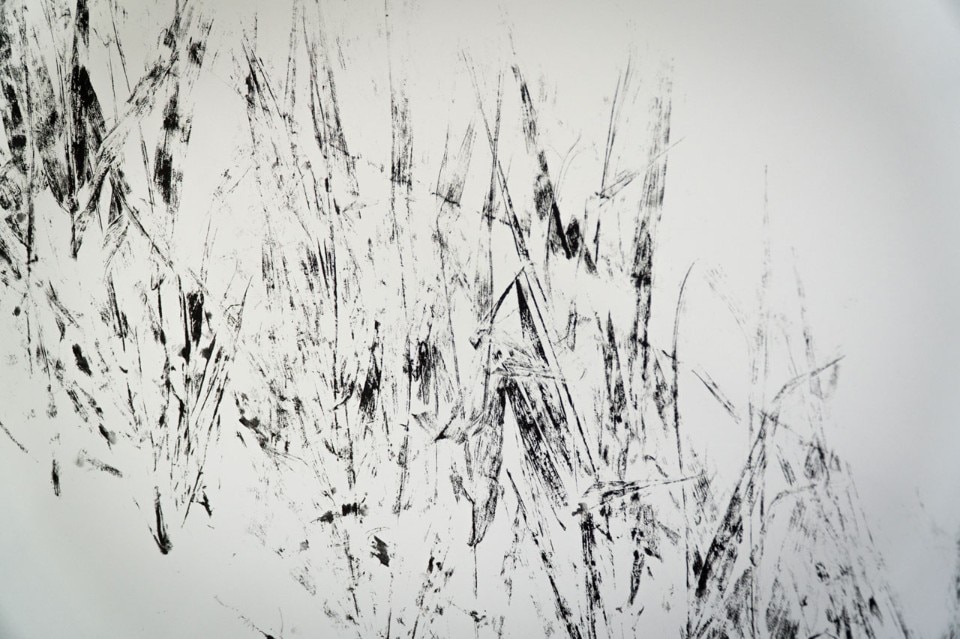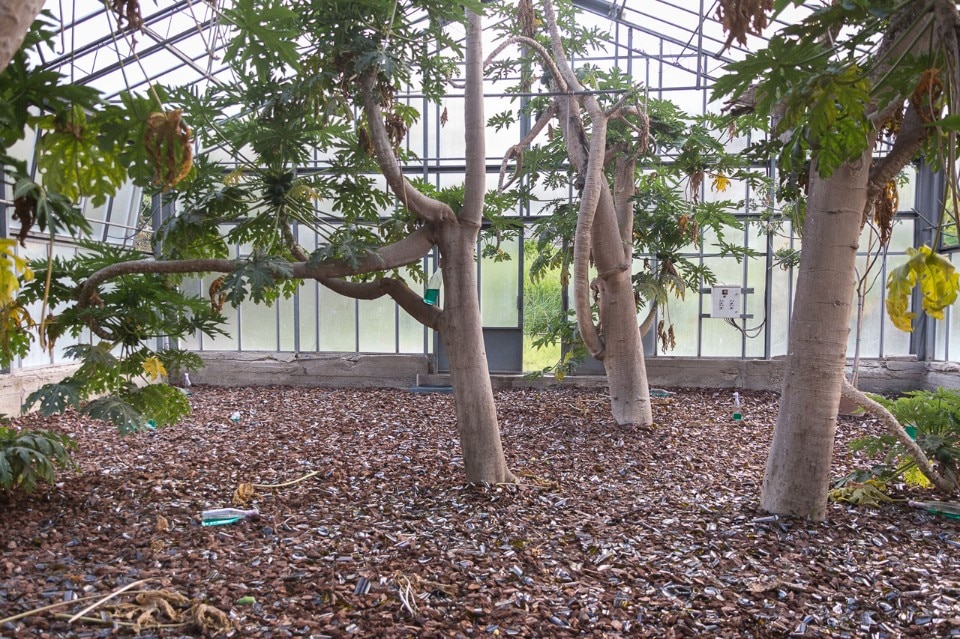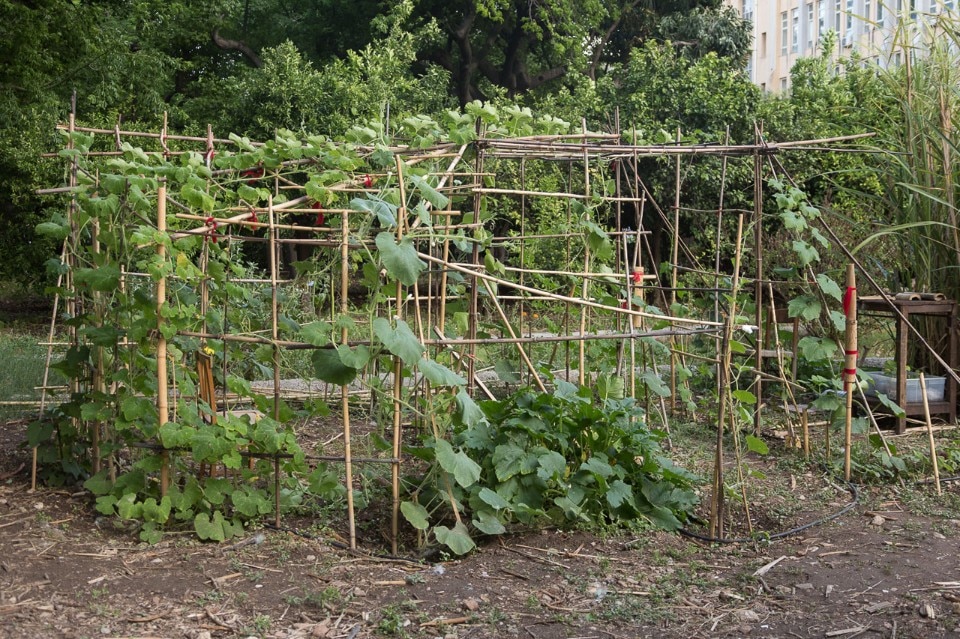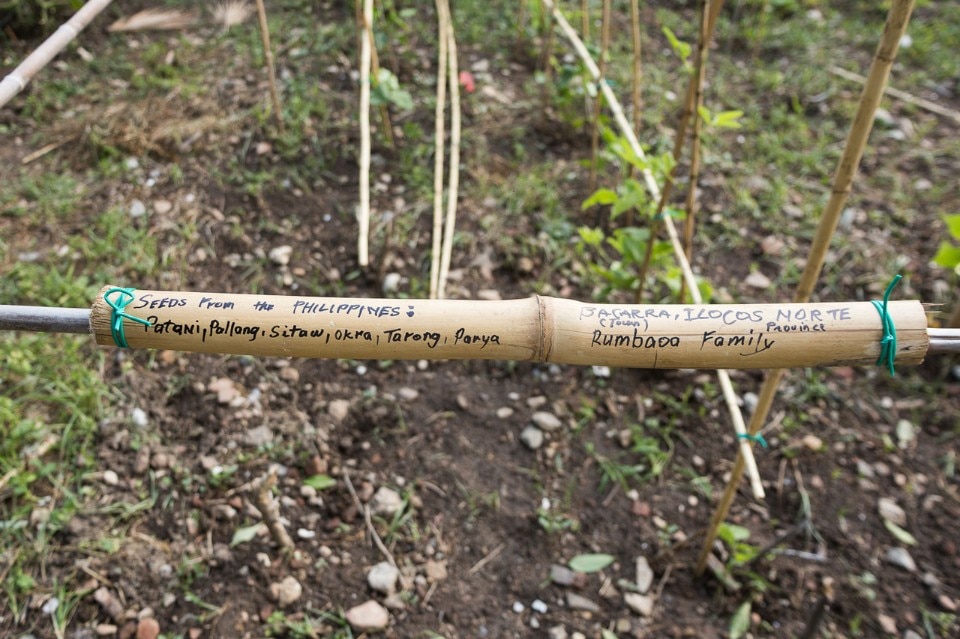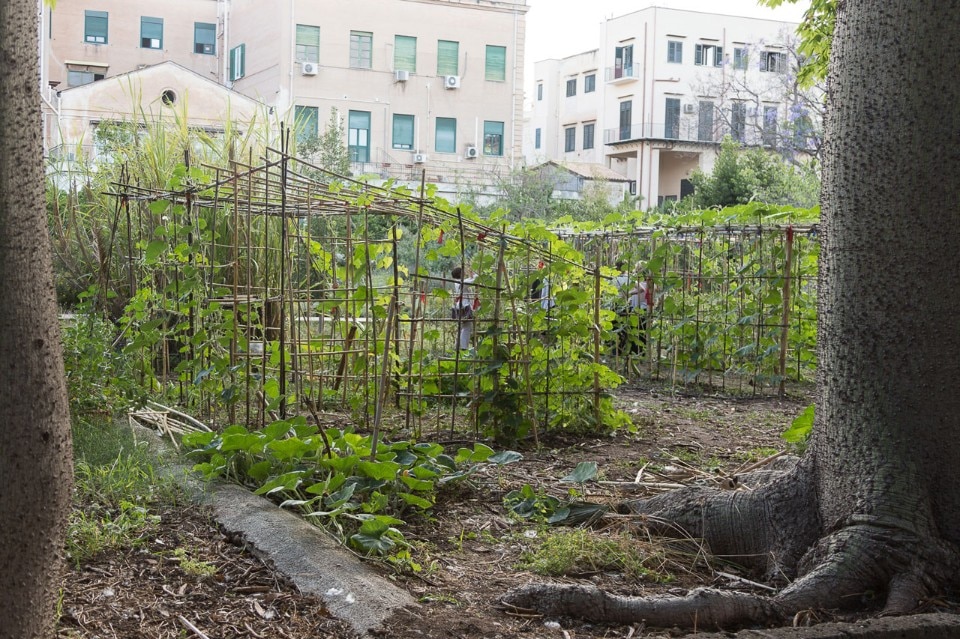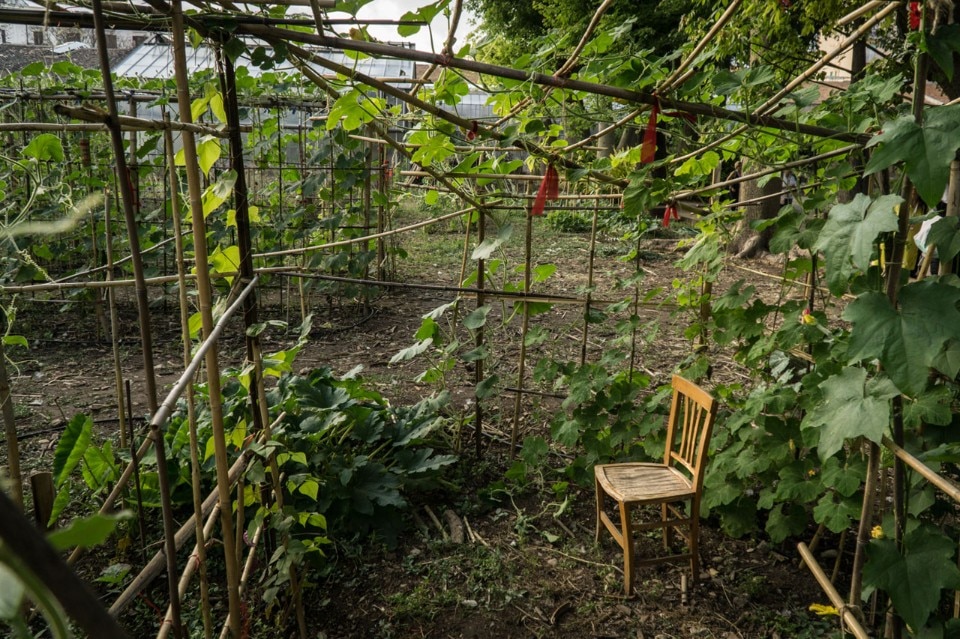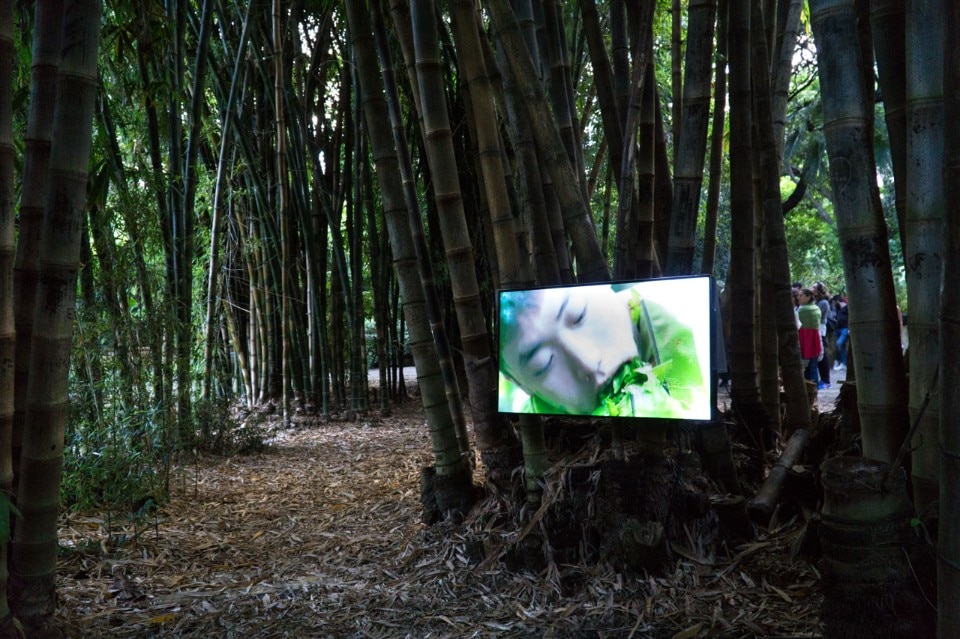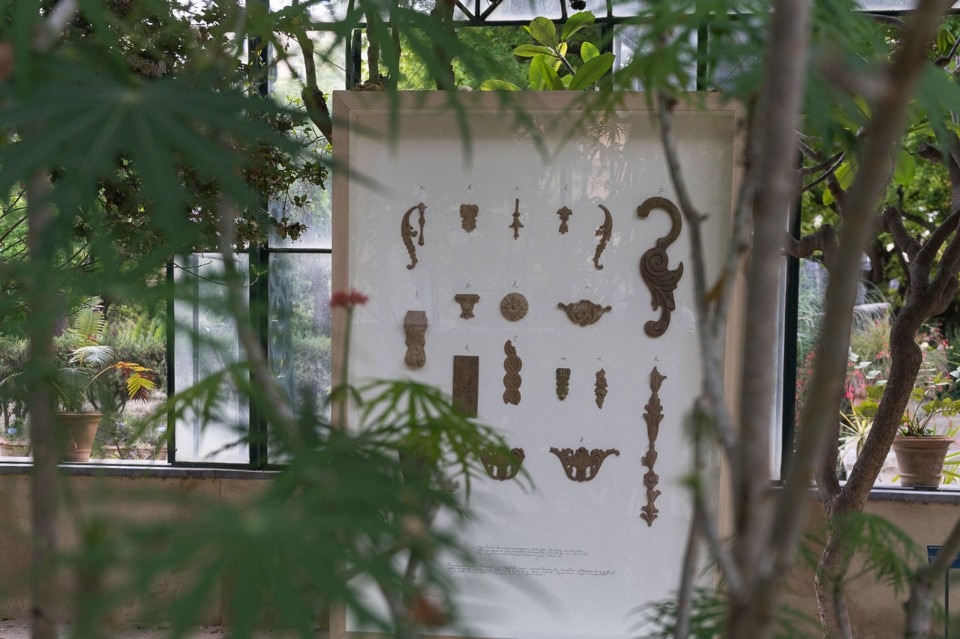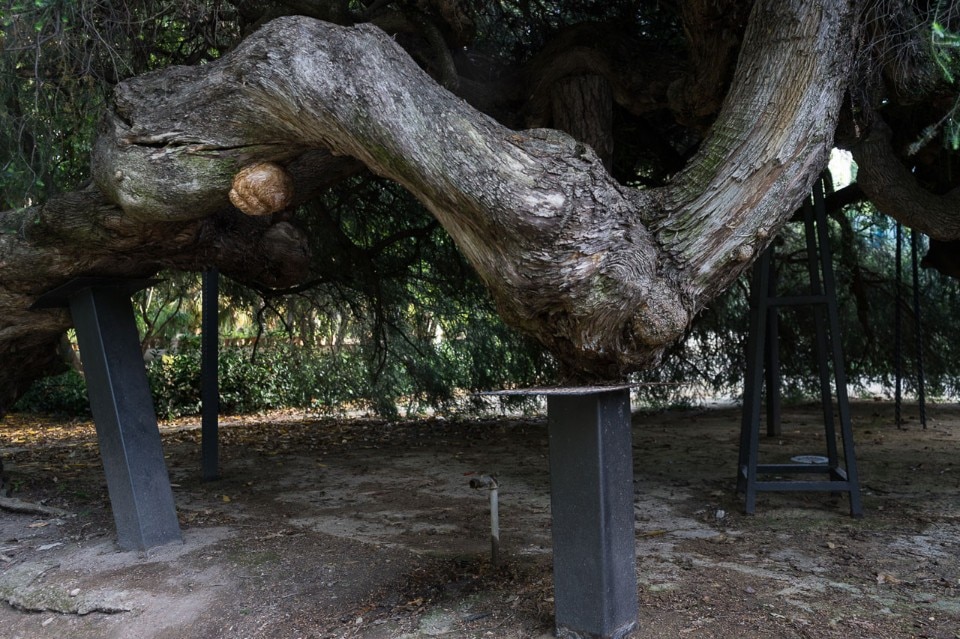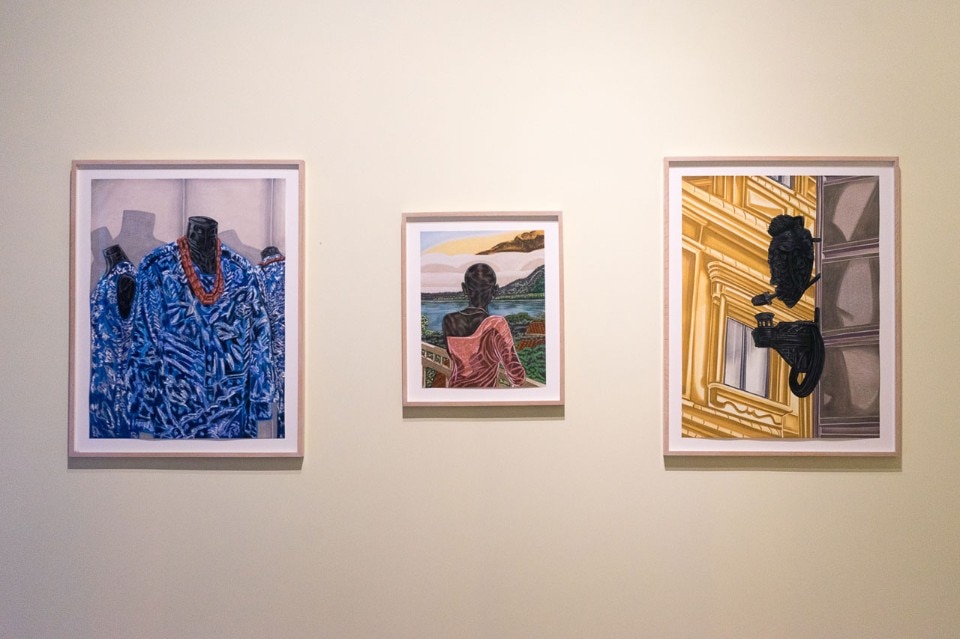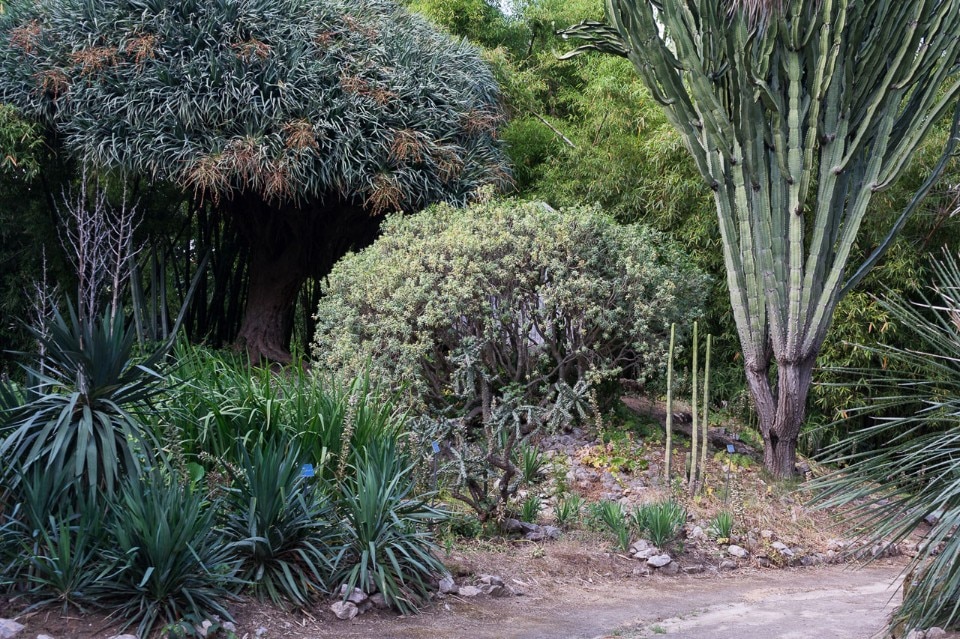Entering the Botanical Gardens in Palermo is in itself an unforgettable experience from an aesthetic and synaesthetic point of view. It is undoubtedly one of the most symbolic places in this Manifesta, built on the idea of a planetarium garden, and of cultivation and coexistence (between species, human beings, etc). Once one begins the search (which is in some cases frustrating) for the works of art semi-hidden among the 12,000 native species of plant in this location, it is hard not to begin to consider the contrast between natural and artistic beauty.
Although the period in which works of art sought beauty through the imitation of nature has been well and truly surpassed, when one finds oneself before a centuries-old ficus, it is impossible not to be enchanted, and to wonder about the sense of the search for art in a place such as this, which seems not to need any external contribution. As Adorno writes: “Like the experience of art, the aesthetic experience of nature is that of images.” (Aesthetic Theory, Continuum, 2002, page 65). It is therefore an insidious area in which the four creative mediators of Manifesta 12 (Ippolito Pestellini Laparelli, Mirjam Varadinis, Andrés Jaque and Bregtje van der Haak) have decided to work. However, help comes from the same German philosopher, who reminds us that in reality the attraction of nature resides in history and in its relationship with society, an indomitable form of nature (unlike the case here, where it has been not only domesticated, but even classified) would be terrifying, and again, with regards to the comparison with art, Adorno writes: “What nature strives for in vain, artworks fulfil: They open their eyes. (Aesthetic Theory, Continuum, 2002, page 66).
The artists who have been entrusted with the demanding but extremely stimulating task of working here, have used an approach which is not at all presumptuous, and have (in the majority of cases) been able to create works which produce awareness. It is perhaps possible to identify two main registers: one regarding scientific research and the other touching on irony.
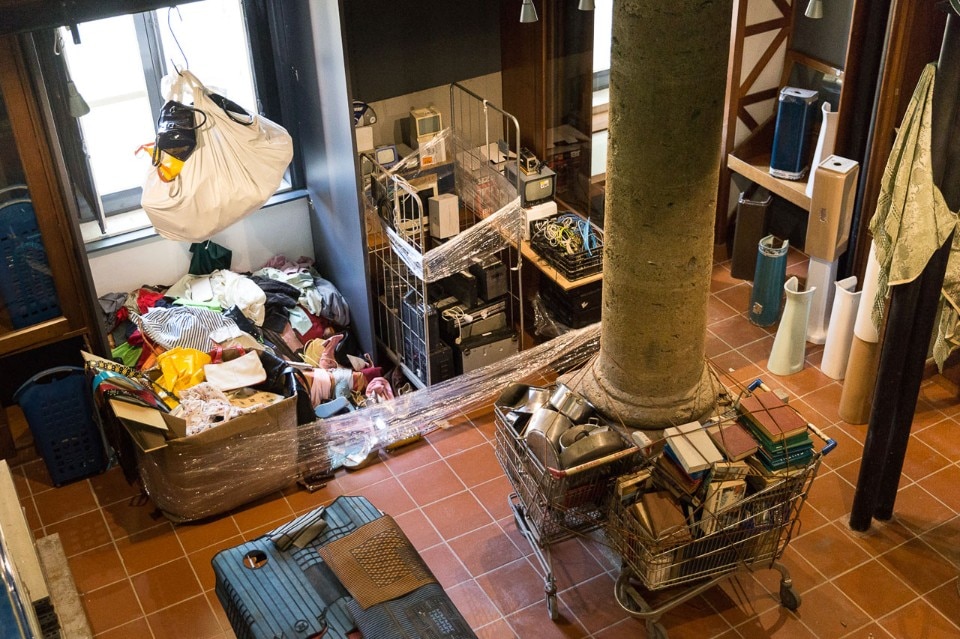
Malin Frazén’s work (“Palermo Herbal”) takes the direction of science, examining how plants are represented visually by humankind for study purposes. A video shown in the Gymnasium shows the diagrams used to visualise the fragrances of vegetables, or images of micro-cellular studies. The project however revolves mainly around the drawings and the long cloths/standards in which the depiction of the plants found in the city by the artist was carried out using the technique perfected by Paolo Boccone, a Sicilian artist who, with the aim of finding a more objective (and therefore scientific) way to depict plants, would colour them, press them and print them directly onto paper.
Diversely, Michael Wang, with The Drowned World, shows what happens in places contaminated by industrialisation, the processes of which alter the chemical composition of environments (as is the case in waste vats), leading to the emergence of microbes of the most varied of colours. The artist has also constructed a metal box which allows the spectator to climb up and look over the wall of the Botanical Garden to see first-hand how this type of contamination is taking place here as well, on the site of an abandoned and inaccessible gas holder. He is also credited with the photographs in the gallery behind the greenhouse.
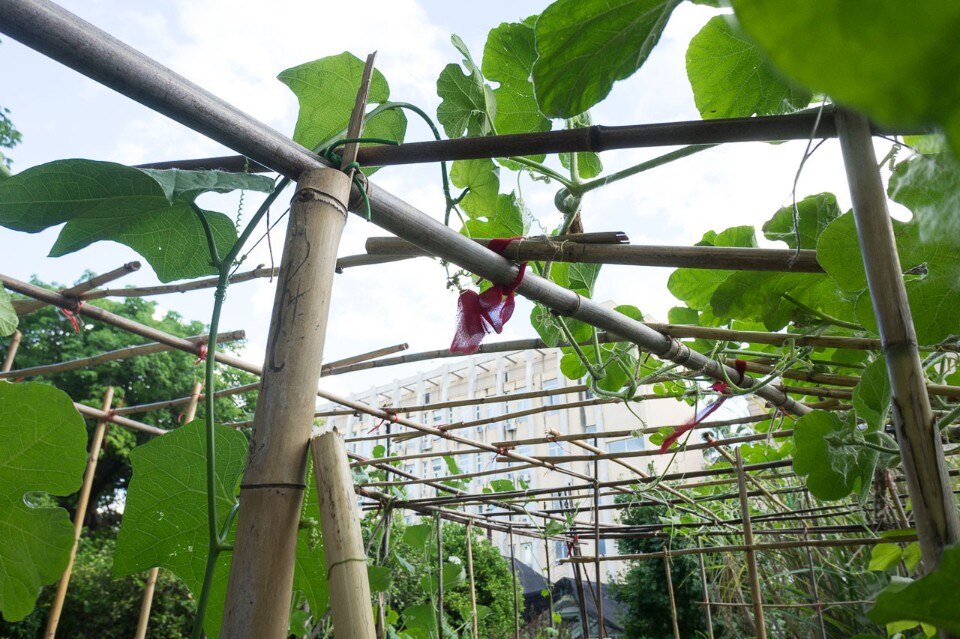
The work of Leone Contini (Foreign Farmers) is directed more in the direction of anthropological work in the field, examining the idea of coexistence between farming and culture. It consists of a study on the seeds which are brought to Italy with migrants, who transport them from their home lands to be cultivated for food. In Palermo, the artist has planted a vegetable garden with a pergola in which the Sicilian pumpkin intertwines naturally with other species of pumpkin cultivated by migrant farmers in other areas of Italy. As well as the vegetable garden, the showcases of the Gymnasium contain the seeds collected by the artist during his recent years of research.
Elegantly hung in mid-air between the leaves of the trees in a greenhouse, the ironic work by Alberto Baraya (New Herbs from Palermo and Surroundings. A Sicilian Expedition) is a collection of the artificial vegetation that the artist discovered during his Sicilian excursions. These are plastic flowers taken from votive alters on roadside guardrails, false hedges for the decoration of balconies, or marzipan fruits. These objects are analysed in detail in botanical tables, where they are dissected and described.
Another work which veers towards the ironic is the fun video by Zheng Bo (Pteridophilia), in which seven young people, who could be, to all intents and purposes, ecosexual activists (an environmental movement which, for a number of years now, have been proselytising around the world), have very intense sex with ferns in the forests of Taiwan.
Then there are three projects which are more difficult to connect to the concept which lies at the foundation of this section of Manifesta 12, entitled “Garden of Flows”, and which examines toxicity, the life of plants and the culture of gardening in relation to the planet’s resources and the common good. These are the works of: Khalil Rabah, entitled Relocation, Among Other Things, a mass of diverse objects grouped together by type in the Tineo Pavilion, which could perhaps be interpreted as a metaphor for the Botanic Garden itself; the enigmatic installation by Lungiswa Gqunta, Lituation, which aims to propose a reading of the garden as a place of oppression, work, memory and ritual, and as a starting point for the redemption of the African peoples; and the beautiful figurative works of Toyin Ojih Odutola from the series Scenes of Exchange, which instead make reference to the theme of cultural and commercial exchange.
- Exhibition title:
- Garden of Flows
- Opening dates:
- 16 June – 4 November 2018
- Venue:
- Orto Botanico di Palermo
- Curators:
- Bregtje van der Haak, Andrés Jaque, Ippolito Pestellini Laparelli, Mirjam Varadinis
- Photography:
- Simona Cantavenera, Giovanni Fontana, Leandro Lembo, Rossana Rizza – Corso di Fotografia, Accademia delle Belle Arti di Palermo


